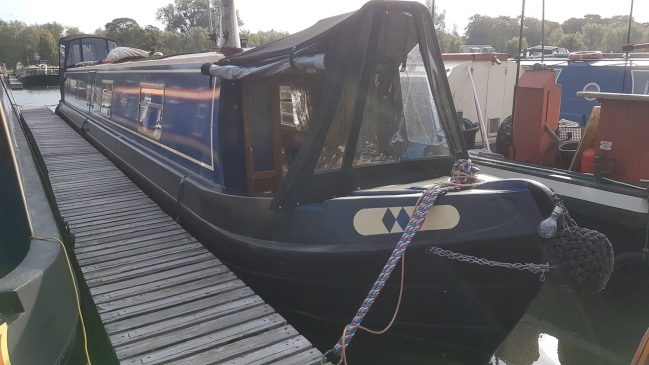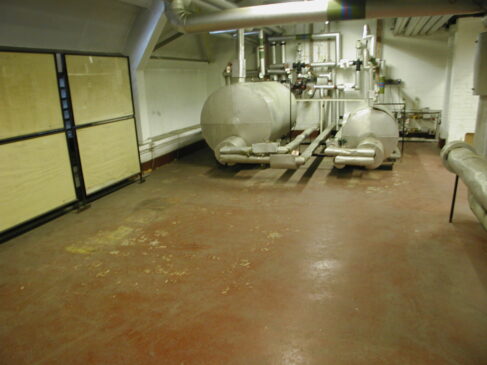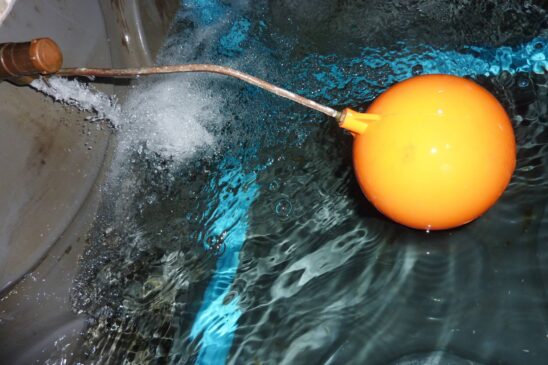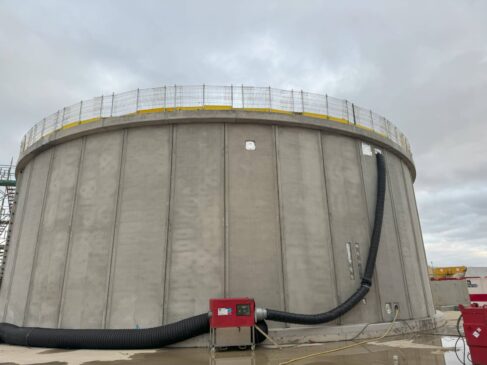Oxford University Department of Engineering Science
Oxford University had a carbon steel tank that they used for holding air under vacuum and was connected to test analysis apparatus within the laboratory in connection with its work on hypersonics.
Challenges
- They had a problem with fine loose rust particles from the tank from entering the air system and test analysis apparatus and also contaminating filters.
- Hot air would be leaving the building at temperatures up to 300°C.
- Any materials used as a tank lining must not have any post-application off-gassing.
- Due to budget and time restraints, abrasive grit blasting was not viable at this time.
- They need to stop the rust and extend the practical working life of the existing tank.
- In addition to lining the tank, we also were asked to line a 600mm x 2,000mm rolled steel pipe linking the tank to the test apparatus within the building.
Before photographs






Solution
The materials that we selected to use on this project have been specifically designed for ease of use in confirmed spaces without the requirement for specialised equipment.
They have strong anti-corrosion properties and are based on solvent-free and low odour two-pack epoxy resin corrosion technology.
The materials are designed for use on poorly prepared and even damp surfaces.
Manual surface preparation was used to remove loose rust, and flaking paint and to provide a mechanical key for lining application.
After removing the loose debris and carrying out a thorough cleaning with an industrial vacuum.
We applied a surface tolerant strong anti-corrosion zinc-based epoxy primer to an average thickness of 125 microns.
After a suitable curing period, we then applied 2 coats of a moisture/damp surface tolerant glass flake reinforced tank lining resin to give an overall total average thickness of around 600 microns.
At each stage of the coating process/cycle additional care is taken with regard to the stripe coating of nuts/bolts/angles and edges. This is good coating practice to ensure full dry film thickness and ensure a long service life of the tank.
Carry out average dry film thickness checks and checks for the absence of microporosity of holidays on the new lining.
This proven tank lining specification has been extensively used for the refurbishment of tanks where a long service life until first maintenance can be achieved.
During Application Work
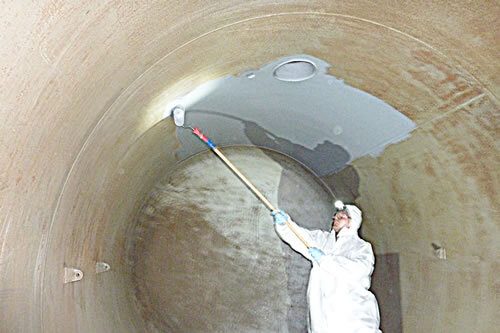


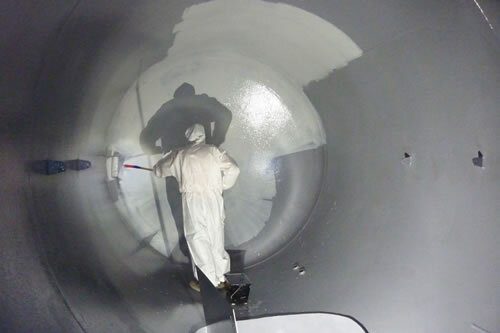
The Results
The tank was returned to our client with the minimum disruption on time and within budget. This will extend the working life of this tank by 10 to 15 years but also provide the university with a dust-free environment to assist with their research.
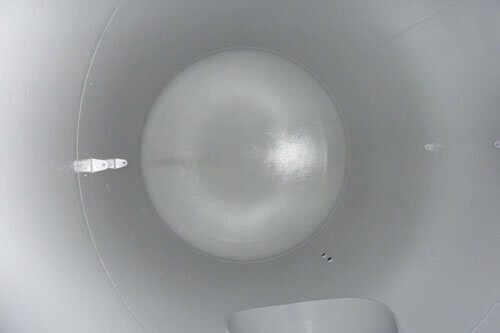

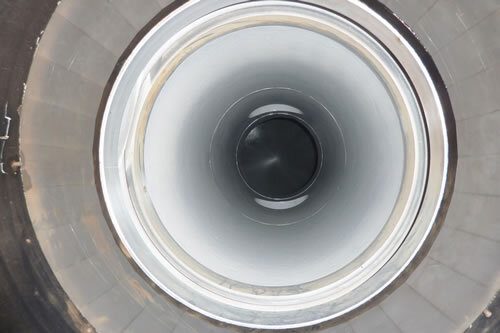

Section of the laboratory relevant to our project (photographs taken with permission from Dr L.D.)









